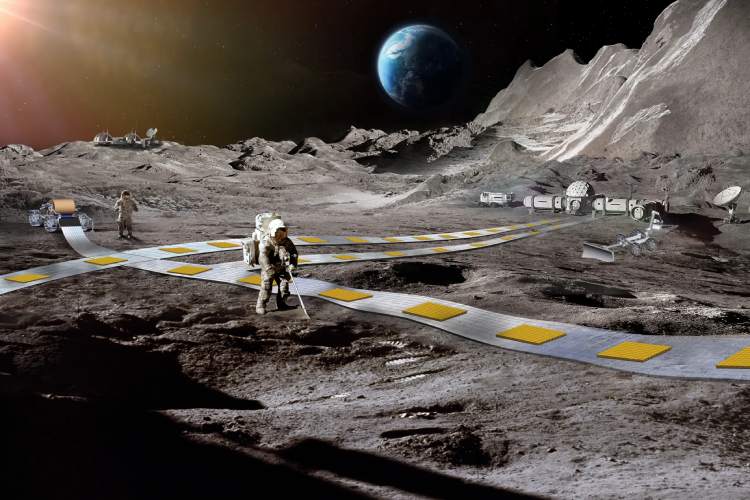
In a recent blog post, NASA unveiled plans to develop a revolutionary transportation system on the Moon called "Flexible Levitation on a Track" (FLOAT), posted by Ethan Schaler from NASA’s Jet Propulsion Laboratory. This innovative project aims to support the establishment of a sustainable lunar base as envisioned in NASA’s Moon to Mars exploration plans. FLOAT will utilise magnetic robots that glide over a specially designed, multi-layer track to transport resources efficiently across the lunar surface. The track consists of a graphite layer for levitation, a flexible circuit for propulsion, and an optional solar panel layer for energy generation, drastically minimising the mechanical wear and lunar dust abrasion common in conventional rovers.
The FLOAT system promises to deploy directly onto the lunar regolith, requiring minimal construction and site preparation. Designed to handle various payloads, these robots can transport significant amounts, over 30 kilograms per square meter at speeds greater than 0.5 meters per second and can move hundreds of thousands of kilograms over several kilometres daily. Such capability makes FLOAT an essential component for daily operations at a future lunar base, particularly for moving mined regolith essential for in-situ resource utilisation like water, oxygen, and hydrogen.
As the project moves into Phase 2, the focus will shift towards reducing technological risks through the development and testing of sub-scale robots and track prototypes in lunar-analog environments. These activities aim to address challenges related to extreme lunar conditions such as temperature fluctuations, radiation, and regolith contamination. This phase will also refine FLOAT's design and simulate more detailed performance scenarios under NASA's Robotic Lunar Surface Operations 2 mission concept, setting the stage for eventual full-scale implementation and further technology demonstrations on lunar missions.

